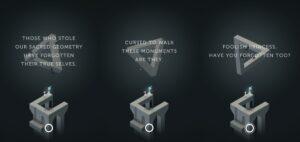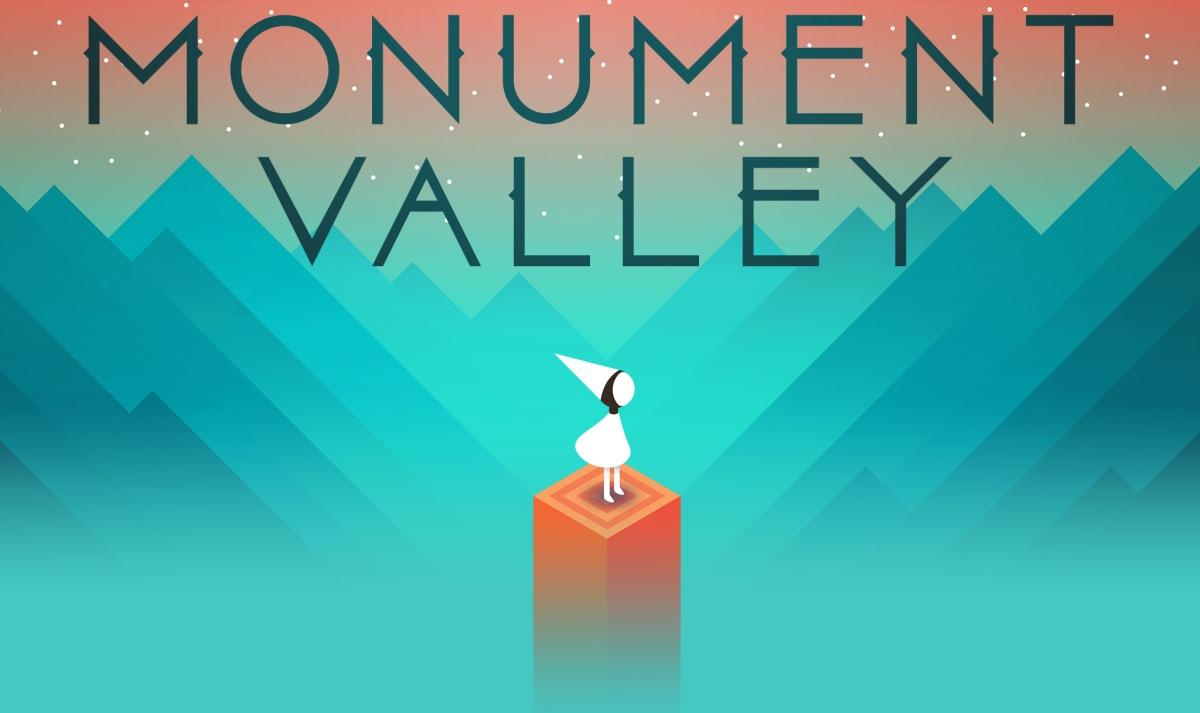Monument Valley is a puzzle game created by Ustwo Games. It is available on iOS, Android and Windows, and its target audience is any children or adults aged 4+.
The mechanics of the puzzles in Monument Valley helps the player navigate the world in a more challenging and interactive way, highlights the strangeness of the surrounding environment and creates a strong sense of accomplishment each time a level is completed and a new part of the story is unlocked.
The player begins the game as an amnesiac, Ida. You begin to solve a puzzle in each level, which generally involves taking advantage of optical illusions and manipulating perspective to help Ida create a path toward the desired destination. Initially, I was under the impression that the game was purely puzzle-based and that I was solving these beautiful puzzles simply for the sake of solving them. However, the game soon reveals that we are solving these puzzles for an unexpected reason – Ida is a thief that has been cursed to walk these monuments as a punishment. The narrative completely shifts our perspective toward the puzzles as we are given a new sense of purpose – to understand our identity and uncover the full truth as we complete our challenges.
Monument Valley makes use of Micro Parallel Arcs as its game architecture. Each level represents a new loop, where we can build our confidence and refine our skills of adjusting perspective, using the tools available and adapting to new obstacles. The puzzles cannot be solved using brute force, but requires thinking outside of the box, and generates a feeling of curiosity or wonder toward our surroundings. The difficulty gradually amps up just the right amount over the levels, making it extra satisfying when something “clicks”, or when we successfully complete a hard level.
On the other hand, the snippets of narrative and evocative stimuli delivered in each level represent the parallel arcs. The levels usually have a cryptic title that forbodes some new development about the story – “In which Ida goes on a quest for forgiveness”, “In which Ida has an unexpected meeting”, “In which a throne lies vacant”, “In which there is no one left to forgive us” etc. Then, throughout the puzzle, spatial storytelling is used to give the player some hints about where we are. For example, different types of architecture and characters suggest different cultural settings. The puzzles also employs embedded narrative – in some levels, Ida reaches a glowing spirit uses dialogue to reveal some more of the narrative, as shown below:

In addition, some levels involve the engagement of Ida’s “friend”, the Totem, which the player uses to help them solve the puzzle. The mechanic of overcoming the challenge “together” creates a sense of attachment toward this NPC, making the world feel even more real.
Through this game architecture, puzzles are not only a challenging means to navigate the surroundings and reach narrative turning points, but are also a strange, novel and satisfying experience on its own. I believe that what sets Monument Valley apart from other games in its genre is the ability to seamlessly integrate puzzling as part of the story, as well as make puzzles a unique and enjoyable experience rather than a tedious, irrelevant obstacle in the critical path.
Overall, I felt that Monument Valley was thoughtfully crafted and had a good balance. The main suggestion that I have is that there be more moments that subtly reveal the true story, rather than having it directly fed to the player through dialogue. A good example of this is when one of the puzzles contained a mirror, and in the reflection we could see that Ida was actually a bird wearing a crown. I suspect that this change will encourage the player to explore more thoroughly, look for hints and actively construct the story in their head, creating a more engaging experience narratively and spatially.



